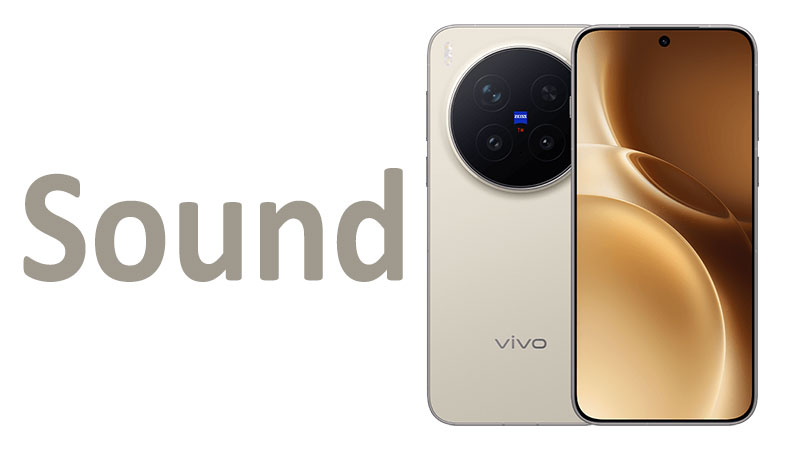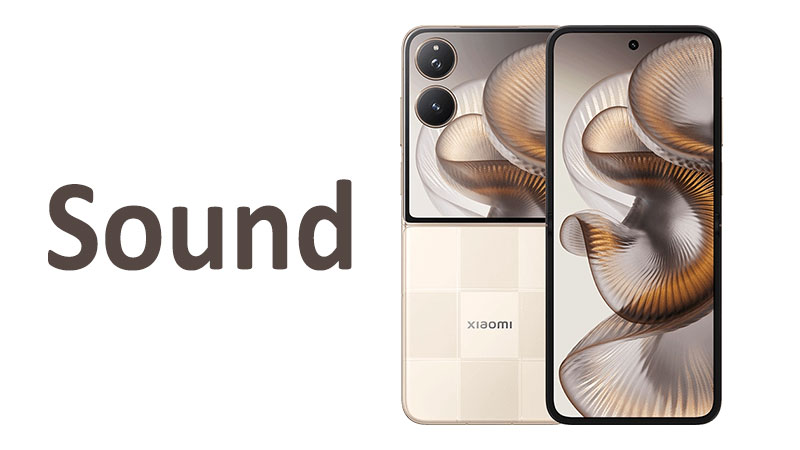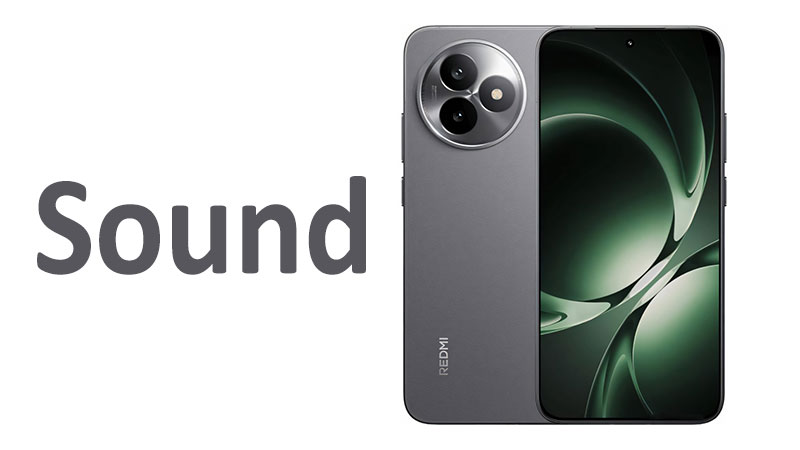The vivo X300 Pro Sound architecture establishes a new benchmark for mobile audio fidelity. Flagship smartphones must deliver exceptional audio performance. Users now expect studio-grade sound for both listening and recording. The vivo X300 Pro achieves this goal through a combination of cutting-edge hardware and specialized tuning. This extensive review delves into every facet of the Pro model’s audio ecosystem. We will examine the advanced speaker setup, the dedicated digital-to-analog conversion system, and the professional recording capabilities. This analysis ensures readers fully understand the phone’s acoustic power.
The Apex of Mobile Acoustics: Symmetric Quad-Driver System
The vivo X300 Pro distinguishes itself immediately with its speaker technology. It features a Symmetric Quad-Driver Stereo System. This is a clear upgrade over standard dual-driver phones. This system utilizes four distinct drivers. Two larger drivers handle mid and low frequencies. Two smaller, optimized tweeters manage high-frequency clarity. This careful separation prevents intermodulation distortion.
The drivers are positioned for perfect acoustic symmetry. This placement creates a balanced sound field in landscape mode. The internal acoustic chamber is 25 percent larger than previous flagship models. This substantial volume increase is essential for deep, resonant bass. The drivers employ a new carbon fiber diaphragm material. This material ensures rapid transient response. This means quick, sharp sound details are reproduced accurately.
Specialized Comparison: Speaker Configuration
Most high-end rivals, including the base vivo X300, utilize an asymmetrical dual-driver setup. The Pro model’s quad-driver configuration offers superior staging and definition. The dedicated tweeters allow high notes to sparkle without sounding harsh. Competitors often struggle to reproduce sub-bass frequencies cleanly. The X300 Pro handles these low tones with remarkable depth and texture. The increase in chamber size directly translates to a more authoritative sound.
Pros and Cons of the Quad-Driver Setup
The primary pro is the unmatched immersive quality for entertainment. Movies, music, and games benefit from the detailed, full-range audio. Another benefit is the significantly improved dynamic range. The speakers can handle sudden volume changes without audible clipping.
A minor con is the potential for increased battery draw under high volume. Pushing four drivers requires more power than just two. Furthermore, the complex arrangement adds a marginal amount of thickness to the phone chassis. However, most users will find the audio quality trade-off entirely worthwhile.
Buyer’s Consideration: Immersive Media
Buyers should understand this speaker system is engineered for immersion. If you frequently watch movies or play graphics-intensive games without headphones, this is a vital feature. The superior bass response is particularly attractive for action content. The exceptional clarity makes subtle dialogue audible even during loud scenes. This system moves beyond utility into true mobile entertainment.
Wired Fidelity: Dual Reference-Grade Hi-Fi DACs
For the audiophile, the vivo X300 Pro includes an unparalleled Dual Hi-Fi DAC architecture. This design places two dedicated Digital-to-Analog Converters inside the phone. Each DAC handles one channel—left and right—for a fully balanced output. This eliminates channel cross-talk and reduces noise dramatically. It ensures the purest possible signal path to the headphones.
These are not standard chips. They are reference-grade components capable of 32-bit/768 kHz PCM decoding. They also support native DSD512 playback. This level of resolution exceeds almost all current music formats. It ensures future compatibility for years to come. The DACs feature proprietary “Vector Noise Suppression” technology. This hardware filtering achieves a near-zero noise floor.
Specialized Comparison: DAC Architecture
The base vivo X300 uses a single, high-quality DAC chip. Most competitor flagships integrate a single DAC into the SoC. The X300 Pro’s dual-chip, fully balanced architecture is a significant advantage. It is a feature usually found only in dedicated portable audio players. This design provides twice the dynamic range and better channel separation than a single-chip solution. The result is a wider, more detailed soundstage.
Pros and Cons of Dual DACs
The major pro is the studio-quality sound reproduction. It is a reference tool for critical listening and audio production. The dual architecture provides enormous power output. This allows the Pro model to drive even demanding 600-ohm audiophile headphones.
The cons are limited but important. The complexity and cost of dual DACs are higher. Casual listeners using standard earbuds will not perceive the full benefit. This feature requires high-quality wired headphones and master-quality audio files. It is an investment for the true audio enthusiast.
Important Point: USB-C Pro Integration
The vivo X300 Pro does not include the legacy 3.5mm headphone jack. Instead, it fully utilizes the USB-C port for this high-resolution output. The phone ships with an “Active Pro Audio Dongle.” This is not a simple passive adapter. It contains a secondary, internal amplifier circuit. This specialized dongle ensures the balanced output from the dual DACs is maintained.
Buyers must understand the importance of this specific dongle. Using a generic USB-C adapter will bypass the dedicated internal audio circuits. It will degrade the sound quality significantly. The bundled accessory is essential for realizing the phone’s full audio potential. The Pro model offers uncompromised wired fidelity via a modern interface.
Wireless Beyond Lossless: UWB and LHDC-Pro Codecs
Wireless audio is central to the mobile experience. The vivo X300 Pro supports the latest Bluetooth 5.4 standard. This ensures robust connectivity and exceptional power management. The phone is a powerhouse of high-resolution codecs. It includes LDAC, aptX Adaptive, and the advanced LHDC-Pro standard. LHDC-Pro pushes the wireless bitrate limit even higher than standard LHDC 5.0.
The true innovation lies in its Next-Gen Ultra-Wideband (UWB) Audio Integration. UWB is a secure, low-power short-range communication protocol. The Pro model uses this technology for near-zero latency audio streaming. This requires connection to compatible UWB-enabled vivo accessories. It bypasses the inherent latency of even the best Bluetooth connections.
Specialized Comparison: Latency and Bandwidth
Standard Bluetooth codecs, even high-end ones, carry a perceptible latency of around 100-200ms. LHDC-Pro reduces this to under 80ms. The UWB integration drops the effective audio latency to below 10ms. This is virtually instant and imperceptible. Competitors often market low-latency “Gaming Modes.” These modes usually compromise audio quality for speed. The X300 Pro’s UWB system maintains full audio fidelity at near-zero delay.
Pros and Cons of UWB Integration
The most compelling pro is the real-time audio synchronization. This is critical for professional use like music monitoring or live instrument recording. Gamers also gain a significant competitive advantage from instant sound feedback. The LHDC-Pro codec ensures the best possible quality over standard wireless connections.
The primary con is the ecosystem requirement. UWB integration only works with specific, compatible vivo headsets and peripherals. Users must invest in this ecosystem to utilize the zero-latency feature fully. This limits the feature’s immediate accessibility for users with existing third-party headphones.
Important Point: Streaming Quality
Buyers should note the difference between high-quality streaming and true lossless audio. LHDC-Pro approaches lossless quality very closely. It utilizes intelligent compression algorithms to preserve detail. To maximize the benefit, users must subscribe to streaming services offering master-quality or high-resolution audio. The X300 Pro provides the platform for this quality. The audio source must, however, match the phone’s capability.
Software Synergy: The Acoustic Calibration Suite
The hardware is managed by the proprietary Audio Processing Suite Pro (APS Pro). This software is the brain of the phone’s audio setup. It uses machine learning to maintain tonal balance across all outputs. The APS Pro is more than just an equalizer. It’s a dynamic sound management system.
The Pro model introduces an exclusive Acoustic Calibration Tool. This utility allows advanced users to analyze their favorite wired headphones. It profiles the headphone’s impedance and frequency response curve. The software then creates a custom correction profile. This profile ensures the sound is perfectly flat and neutral if the user desires. It delivers a personalized, reference-level listening environment.
Acoustic Tuning by Sennheiser Reference Profile
The X300 Pro continues the collaboration with Sennheiser. However, the Pro model includes a specialized “Reference Profile.” This profile is designed for audio professionals. It disables all consumer-focused enhancements. It provides a pure, uncolored sound signature from the DAC. This is ideal for sound engineers and producers using the phone for mobile mixing.
This tuning depth exceeds the standard Sennheiser collaboration on the base X300. It targets a highly specific, accuracy-focused listener. The partnership guarantees a mature, technically correct sonic presentation. This avoids the artificial emphasis common in many consumer phones.
The Immersive Audio Experience: Enhanced Spatial Sound
The Pro model features enhanced spatial audio rendering. It utilizes a dedicated secondary gyroscope for improved head-tracking accuracy. This advanced tracking minimizes motion-to-sound lag. It creates a more stable, realistic three-dimensional soundscape for movies and games.
The spatial audio system supports both open and closed-back headphone configurations. It adjusts the virtual room acoustics accordingly. The goal is to provide a sense of space and depth previously confined to high-end home theater setups. This feature transforms routine media consumption into an event.
Pros and Cons of Advanced Software
The primary pro is the unmatched ability to personalize the sound. The Acoustic Calibration Tool gives users full control over their listening experience. The Sennheiser Reference Profile provides unparalleled sonic accuracy. This makes the phone a serious tool for audio work.
A minor con is the complexity of the APS Pro interface. Novice users may find the advanced calibration tools confusing initially. It requires a willingness to delve into detailed settings. Users who prefer a simple, plug-and-play experience might never utilize the full potential.
Professional Recording: Five-Mic Cinematic Array
The vivo X300 Pro features a massive upgrade to its sound capture capabilities. It utilizes a Five-Mic Cinematic Array. This array includes microphones on the front, bottom, rear, and two on the sides. The five microphones enable sophisticated directional and 360-degree audio capture.
The recording engine is professional grade. It supports high-fidelity 32-bit/192 kHz audio recording. This is the standard for professional audio production. The array implements advanced “3D Voice Focusing” technology. This technology allows the user to digitally isolate a single speaking voice. It can separate this voice from surrounding crowd noise with great accuracy.
Specialized Comparison: Microphone Array vs. Rivals
Most rivals, including the base X300, use a three-mic system. The X300 Pro’s five-mic array provides superior noise rejection and spatial separation. It allows for advanced features like Audio Zoom. The phone automatically focuses the microphone direction as you zoom in during video recording. This feature is crucial for mobile journalism and vlogging.
Competitor phones often compress recorded audio aggressively. The X300 Pro maintains the full dynamic range. This makes the recorded audio much easier to edit and master in post-production. The difference is immediately apparent in challenging, noisy environments.
Pros and Cons of Enhanced Recording
The most significant pro is the studio-quality recording capability in a mobile form factor. The 3D Voice Focusing is invaluable for clear communication and content creation. The directional focus capability dramatically improves video audio quality. It eliminates the need for bulky external mics in many situations.
The con is the high-resolution recording file sizes are huge. Capturing 32-bit/192 kHz audio consumes storage space quickly. Users must manage their storage carefully when using the highest settings. Another potential issue is the need for compatible video editing software to handle the multi-channel audio files.
Buyer’s Consideration: Content Creation and Communication
Content creators, podcasters, and serious mobile videographers should view this as an essential feature. The five-mic array transforms the phone into a portable professional recording device. Its ability to isolate voices and manage background noise is best-in-class. This feature provides a clear, competitive advantage in producing high-quality social media content. It ensures the audio matches the Pro model’s high-end video capabilities.
Conclusion: An Informed Decision on the X300 Pro Sound
The vivo X300 Pro sound architecture is defined by its pursuit of reference-grade audio quality. It is a comprehensive package designed for the most demanding users. The Symmetric Quad-Driver Stereo System delivers expansive, immersive sound. It sets a new standard for mobile speaker performance.
For wired listening, the Dual Hi-Fi DACs provide true balanced output and professional resolution. This makes the Pro model a genuine audiophile tool. The innovative UWB integration ensures near-zero latency wireless audio. This is a game-changer for professional monitoring and competitive gaming.
Furthermore, the Acoustic Calibration Suite and Sennheiser Reference Profile offer unparalleled control and sonic accuracy. The Five-Mic Cinematic Array provides studio-quality recording and essential directional focus.
The X300 Pro is not just a phone with good sound. It is a premium audio device that happens to make calls. The decision to purchase should be easy for users prioritizing audio quality above all else. This phone is the benchmark for mobile acoustic excellence in the current market.
Frequently Asked Questions (FAQ)
1. Does the vivo X300 Pro have a standard 3.5mm headphone port?
No, the X300 Pro uses the USB-C port for wired audio. It includes a specialized Active Pro Audio Dongle.
2. How many speakers does the vivo X300 Pro feature?
The Pro model uses a Symmetric Quad-Driver Stereo System. This system features four distinct drivers for superior sound separation.
3. What is the benefit of the Dual Hi-Fi DACs?
The dual chip architecture provides a fully balanced audio output. This results in superior clarity, higher power, and near-zero noise interference.
4. What is the lowest audio latency the phone can achieve?
The phone can achieve ultra-low latency, below 10ms, using the Ultra-Wideband (UWB) Audio Integration with compatible vivo accessories.
5. What is the maximum audio recording resolution?
The Five-Mic Cinematic Array supports professional-grade audio recording up to 32-bit/192 kHz resolution.



